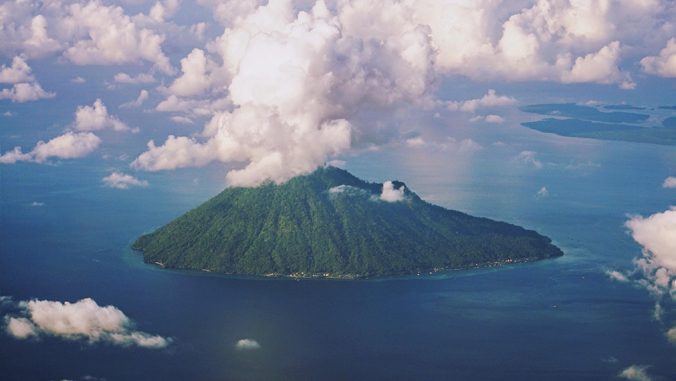
As part of global ocean circulation, warm water in the upper layer flows from the Pacific Ocean to the Indian Ocean through the Indonesian Archipelago. The flow through the archipelago, known as the Indonesian Throughflow, is neither a steady one nor a single stream as it navigates through the various seas, straits and passages.
A team of researchers published a study that investigated the role eddies play in determining the path and transit times through this major sea area—dynamics that ultimately influence the climate of the region. The researchers represent the University of Hawaiʻi at Mānoa, Tohoku University, Japan Agency for Marine-Earth Science and Technology, Kyushu University and the National Research and Innovation Agency of Indonesia.
Because of their warm surface temperature, the seas in the Indonesian Archipelago are an area where deep convection in the atmosphere develops, which is the heart of the overall atmospheric circulation in the tropics. The behavior of the Indonesian Throughflow is considered to be a factor that determines the sea surface temperature in the region, which is influential for climate phenomena such as El Niño events.
M. Riza Iskander, the lead author of the study, spent many months at the International Pacific Research Center at UH Mānoa School of Ocean and Earth Science and Technology (SOEST) as part of the Tohoku University-UH jointly supervised graduate student program. While at SOEST, Iskander, ocean modeling specialist Yanli Jia, and oceanography professor Kelvin Richards, along with their co-authors, used a high-resolution ocean general circulation model to track simulated particles in the fluid flow of the Indonesian Throughflow and noted where and when the water properties change.
Influence on Indonesian current
They explored the role that flow variability plays in the Indonesian Throughflow pathway and its transit time through the major seas. The effects vary considerably depending on the route. In the Sulawesi Sea, flow fluctuations are large, seawater circulates over a wide area for an extended period, and rises from the middle to near the surface, causing significant changes in water properties due to turbulent mixing. On the other hand, in the Banda Sea, fluctuations of the current are slight, and the influence of eddies on the Indonesian current is negligible.
As global warming progresses, the Indonesian Throughflow is also expected to change. Such changes may alter water temperatures in the Indonesian Archipelago and Indian Ocean, modulate El Niño and the Indian Ocean Dipole Mode Phenomena, affecting local weather. In the future, the research team would like to clarify how the eddy effects on the path and residence time of the Indonesian Throughflow, are linked to water temperature in these areas, and thereby contribute to improving the accuracy of future projections.

